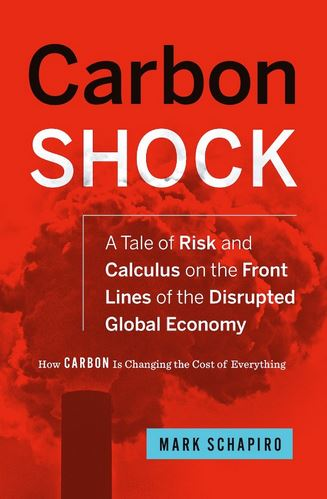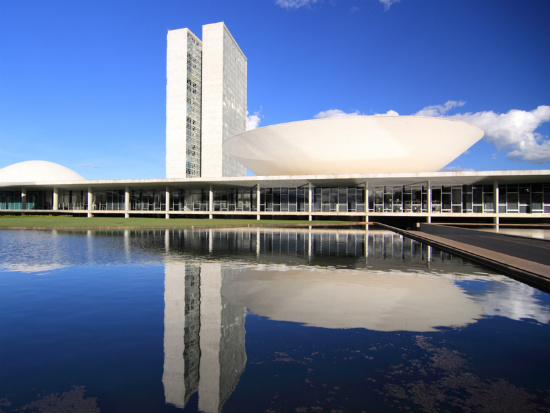 |
| Reviews and Templates for Expression We |
Carbon Shock: More leaders are following the money

Chaos and unpredictability. Those are the characteristics of the natural world under the pressures being wrought by climate change. Normal patterns of rainfall, temperature and extreme weather are changing so rapidly that past baselines for these primordial forces are less and less relevant.
Now it’s becoming increasingly clear that the volatility we’re seeing in our natural world is reshaping our financial world, too. Like the migration patterns of songbirds that no longer correlate to the hatching patterns of their insect prey, or the mountain snowpacks that no longer store water for the dry summer months, the economy is facing similar miscues borne of the interactive loop between tumult in the atmosphere and tumult on the earth.
President Obama and other heads of state will be wrestling with such concerns at this week’s U.N. Climate Summit, which takes place just as the climate debate appears to be shifting, from disputes over the costs of moving away from fossil fuels toward a far more productive, and accurate, discussion over the costs of inaction.
There is ever-broader recognition — from the costs of extreme events to the stresses put on agriculture from erratic water patterns to public health systems struggling to contain diseases migrating northward — that climate change is imperiling national budgets and transforming the landscape of risk for businesses.
Climate change, in short, is the most significant economic challenge of our time.
Hidden costs of carbon

It’s not, however, as if carbon hasn’t always had a cost; it’s just that, until now, those costs have been hidden. We haven’t been accounting for them. Just as an optical illusion tricks the eye into seeing something that’s not there, traditional accounting diverts our attention from invisible costs; we see only profits.
Three thousand of the world’s biggest companies, according to a United Nations Environment Program report, cause more than $2 trillion annually in un-accounted for environmental costs; and the bulk of those costs, not reflected in the ledgers of profit and loss, relate to the emissions of greenhouse gases.
They’re off the official books because we, the public, pay for them. This is known as asymmetric risk, a term of the financial arts that means the public bears the risks while fossil fuel users earn the profits. But the costs from all that discounted energy have been breaking out all over — providing the economic backdrop to the emergency summit convened by U.N. Secretary General Ban Ky-moon this week.
A surprise awaits. Climate change has been shaking up the geopolitical order, giving rise to new powers and diminishing others and in the process challenging our existing ideas of who’s doing what where in response to the onrushing changes sparked by tumult in the atmosphere. This can be seen most vividly in Brazil and China, two rapidly growing developing countries that are outpacing both the United States and Europe in their rates of economic expansion. It’s an axis ripe with kinetic power in the climate-induced shake-up underway.
From Brasilia
In the winter of 2010, I made my way to Brasilia, the Brazilian capital that sprawls in a perfect grid across the broad open cowboy country of the savannah. At that time, Brazil was the widely recognized leader of developing countries, and played a key role in climate negotiations on behalf of the G-77. The country’s vast low-carbon resources of water, trees and bio-wastes (from its vast agriculture) made it seem the environmental harbinger of the future; Brazil generates more than 80 percent of its energy from renewable sources, including hydro, thermal and wind, and only about 15 percent from coal and other fossil fuels.
At the headquarters of the country’s national environmental agency, IBAMA, I interviewed Biancha Bastos Americano, an environmental engineer who was one of the government’s lead climate negotiators during the presidency of Luiz Inacio Lula da Silva.
I asked Americano how Brazil would fare in a world in which carbon has a price. She pointed to the ceramic coffee cup I was holding: “See that cup. Brazil beats any country in a world in which carbon has a price.” She smiled, briefly: “Including China!” I was startled by her quick response. “The energy used to process the clay for that cup was obtained from water-powered hydro dams in the Amazon. The cup was manufactured in a ceramic factory that is fueled with biomass. It was transported here by a truck using biodiesel."
The cup she referred to was nothing special. Very much, in fact, like the cups I use to drink my own coffee — except most of mine are actually made in China, and this one was made in Brazil, in the industrial zone outside Sao Paulo. It is, indeed, a tiny bit more expensive than the cheap coffee cups imported from China, from factories most likely powered by coal, that can be purchased at shops across the country.
But the idea that this plain white Brazilian cup would become comparatively less expensive than its imported Chinese counterpart if the latter had to include the price of the energy used to make it seemed to encapsulate the central financial question posed by the climate conundrum: How does the coffee cup made with more renewable energy become at least equally competitive with cups made from more destructive sources of energy? This quandary of the cup is a tiny microcosm of the central challenge that has bedeviled the world for two decades. Brasilia's Congress buildings (Credit: gary yim via Shutterstock)
Brasilia's Congress buildings (Credit: gary yim via Shutterstock)
Remove the $500 billion annually in global subsidies to the fossil fuel industries, and compel those industries to include their actual costs in the price, and you create a far more level playing field on which renewables can compete. Determining what that price should be, who should pay it and how — whether via taxes, markets or other options — has been a central question for negotiators. Since the failure of the Copenhagen negotiations in 2009 to devise a global successor to the Kyoto Protocol, answering the question largely has been left to improvisation. And responses are breaking out all over, sometimes in the most unexpected of places.
The Szenzhen model
One afternoon in late August 2013 in Rio de Janeiro, a group of Brazilian, Latin American and other developing country officials gathered for a climate conference co-sponsored by the World Bank and the state of Rio de Janeiro. The Brazilians had commissioned a mini-Stern report which concluded that if current climate trends continue the country’s GDP could drop by from $500 billion to $2 trillion by 2050. Researchers at Oxford University predicted that the area for cultivation of Brazil's major crops could also shrink significantly by 2050 under current trajectories — for soybeans, the country’s dominant crop, by as much as 24 percent. The conference was intended to re-ignite an effort to create a cost for carbon that had fumbled in the face of industry opposition.
Wu Delin, vice deputy mayor of the Chinese city of Szenzhen, rose to give a talk that rocked the proceedings. Szenzhen is a modern industrial city of 8 million people in Guangdong province, the same province with which Pittsburgh had traded its burden of emissions. From the dais, Delin announced that the government in Beijing had decided that it was time to start penalizing the producers of fossil fuels, and had asked Szenzhen and other of the country’s most industrialized provinces to begin the process of creating their own cap-and-trade system.
In a PowerPoint presentation, Delin went step by step through Szenzhen’s plan to be the first of the provinces to require the most fossil-fuel intensive industries to purchase emission allowances for their greenhouse gas emissions. His city was positioning itself to be the model, Wu Delin said, a test run for a national program.
Two hundred of the province’s largest emitters — utilities, steel, iron and cement manufacturers, all heavy users of coal — by January would be subject to emission caps, and they would be expected to buy allowances on the new carbon market being created in Szenzhen. Ninety-five percent of the allowances would be issued for free in the first year, a number that over time would decline. The aim was to reduce the carbon intensity of Guangdong industry by 25 percent by 2015.
Response among the Brazilians was astonishment. “There was silence,” recalled Walter Figueiredo De Simoni, the Secretary of Environment for the state of Rio de Janeiro, who helped organize the gathering. “We were stunned. Our response was, ‘Wow!’ Just like that, they’re going to have a carbon price.’” Szenzhen, China (Credit: ben barber via Shutterstock)
Szenzhen, China (Credit: ben barber via Shutterstock)
De Simoni, an economist by training, had spent the previous year negotiating with businesses in the state of Rio de Janeiro to kick-start a market or implement a minimal carbon tax. But he’d been foiled by industry opposition. Businesses claimed that such a move would put them at a competitive disadvantage with their global competitors, namely China. Now China was announcing it would unilaterally accomplish what De Simoni had been trying to do unsuccessfully for more than a year.
“You look at the two countries,” he said, still bristling at the irony several months later. “Brazil is seen as the greener one, but we’re not as prepared to act. China is seen as the dirtier one, yet they are preparing much more aggressively for this greener economy.” Brazil, the “environmental powerhouse,” blessed with an abundance of ‘green resources’ — water, biofuels, sun — had been upstaged by China, long seen as the global villain of climate change.
It was a remarkable moment in the parallel world evolving between two of the most important countries in the evolving climate dynamic. Other markets were launched in 2014, in Shanghai, Beijing, Chongqing and Tianjin provinces. The world’s biggest manufacturer and user of fossil fuels was beginning, at least, to give a price to carbon. Of equal significance, for the first time industries in these provinces will have to keep a running inventory of their greenhouse gas emissions — although the data is not available to the public.
Practically overnight, the Chinese carbon markets became the second largest in the world after the European Trading System. American consumers, in fact, are starting to pay that price, as small as it is, in their Chinese imports, whether the U.S. government acts or not.
The Chinese initiative last year came just months after the Chinese Academy of Environmental Planning, a scientific arm of the government, proclaimed that the cost of environmental degradation to the Chinese economy had by 2010 rocketed threefold since 2004, to about 3 percent of the nation’s GDP. And though the history of carbon markets thus far have had a troubled history in actually leveraging a price high enough to trigger large-scale investments in renewables, they do begin the process of lifting the lid on the accounting sleights of hand that have long kept the actual costs of fossil fuels out of sight.
Catch-22 since Copenhagen
At every climate summit since Copenhagen, the positions have been repeated: The United States will not commit to a global emissions accord in the absence of a Chinese commitment to reduce their emissions, and the Chinese claim the same — a catch-22 that has served both sides over the past two decades.
“For quite some time,” commented Ma Jun, director of the Institute of Public and Environmental Affairs, an environmental NGO in Beijing, “we have used each other as an excuse for non-action.”
Finally, climate change is registering in the language that politicians and industrialists understand: money. As our knowledge of the economic costs of climate change increases, there is at least the chance that during the coming climate talks — in New York, followed by Lima, Peru in November and followed by Paris in 2015 — the rigid Kabuki dance, in which each side behaves predictably along long-established lines, will be broken.
|
|
|
|
Copyright 2011 Energy and Technical Services Ltd. All Rights Reserved. Energyts.com |